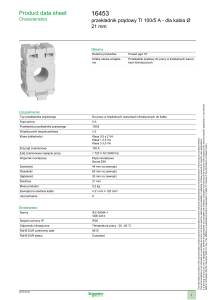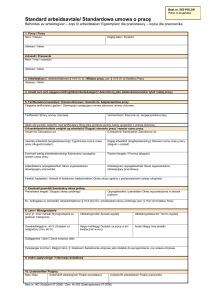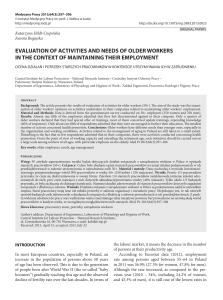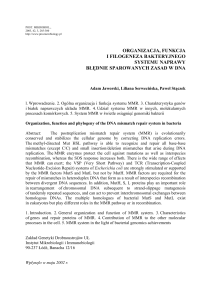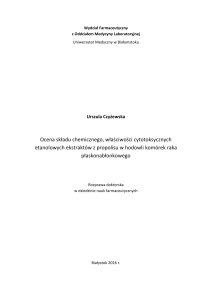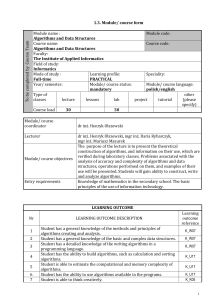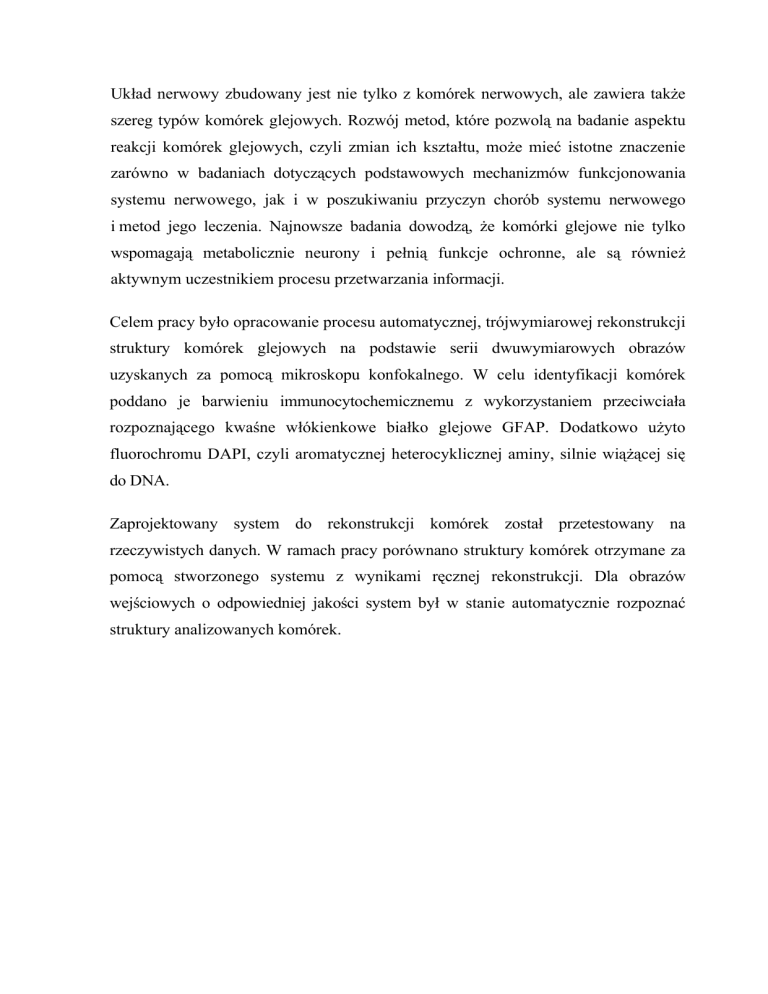
Układ nerwowy zbudowany jest nie tylko z komórek nerwowych, ale zawiera także
szereg typów komórek glejowych. Rozwój metod, które pozwolą na badanie aspektu
reakcji komórek glejowych, czyli zmian ich kształtu, może mieć istotne znaczenie
zarówno w badaniach dotyczących podstawowych mechanizmów funkcjonowania
systemu nerwowego, jak i w poszukiwaniu przyczyn chorób systemu nerwowego
i metod jego leczenia. Najnowsze badania dowodzą, że komórki glejowe nie tylko
wspomagają metabolicznie neurony i pełnią funkcje ochronne, ale są również
aktywnym uczestnikiem procesu przetwarzania informacji.
Celem pracy było opracowanie procesu automatycznej, trójwymiarowej rekonstrukcji
struktury komórek glejowych na podstawie serii dwuwymiarowych obrazów
uzyskanych za pomocą mikroskopu konfokalnego. W celu identyfikacji komórek
poddano je barwieniu immunocytochemicznemu z wykorzystaniem przeciwciała
rozpoznającego kwaśne włókienkowe białko glejowe GFAP. Dodatkowo użyto
fluorochromu DAPI, czyli aromatycznej heterocyklicznej aminy, silnie wiążącej się
do DNA.
Zaprojektowany system do rekonstrukcji komórek został przetestowany na
rzeczywistych danych. W ramach pracy porównano struktury komórek otrzymane za
pomocą stworzonego systemu z wynikami ręcznej rekonstrukcji. Dla obrazów
wejściowych o odpowiedniej jakości system był w stanie automatycznie rozpoznać
struktury analizowanych komórek.
The nervous system comprises not only of neurons, but also contains several types of
glial cells. Developing methods to the study of response of glial cells, which change
their shapes, could be important both in studies of basic mechanisms of the
functioning of the nervous system and in seeking the causes of diseases of the
nervous system and methods of treatment. Recent studies have shown that glial cells,
particularly astrocytes. not only support the neurons metabolically and perform
protective functions, but they are also an active participant in the process of
information processing. With the use of developed image processing algorithms, an
automatic, 3D reconstruction of the structures of the brain glial cells has been
preformed. Series of two-dimensional images, showing histologicaly prepaired brain
tissue were the input data. Images were obtained with the use of confocal microscope.
In order to identify glial cells they were stained with immunohistochemical antibodies
recognizing the glial fibryllary acidic protein called GFAP. It is a marker of
astrocytes. which stains the cytoskeleton. In addition, fluorochrome DAPI, wich is
a heterocyclic aromatic amine binding strongly to DNA, was used. DAPI staining
anabled determining locations of cells nuclei.

